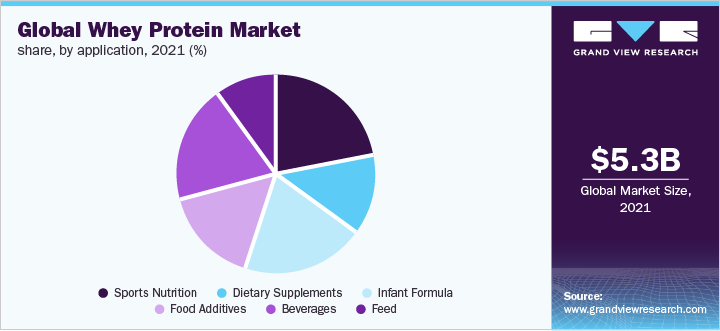Whether it be in your post-workout protein shake or breakfast yogurt bowl, whey protein is in most foods consumed daily. Whey is the liquid remaining after milk has been curdled and strained and is the byproduct of the manufacturing of cheese or casein.

The Global Whey Protein Market, by application Share, in 2021. Focused on Sports Nutrition, Dietary Supplements, Infant Formula, Food Additives, Beverages, and Feed.
Whey protein has many commercial uses, and the global market is expected to grow at a compound annual growth rate (CAGR) of 10.48% from 2022 to 2030, according to a report by Grand View Research.
The demand for whey protein is increasing as awareness about healthy lifestyles rises. Fitness and sports clubs frequently recommend protein supplements, which draw customers’ attention to whey protein. This supplement aids in the growth of muscle mass with its ability to boost muscle protein synthesis helping you achieve your gains and goals. It can also help with weight loss and lower cholesterol. In addition, whey protein is used in the food industry in baked goods, dairy products, beverages, cereals, chocolates, and baby foods due to its high protein content, antibacterial properties, and general positive formulation enhancements.





